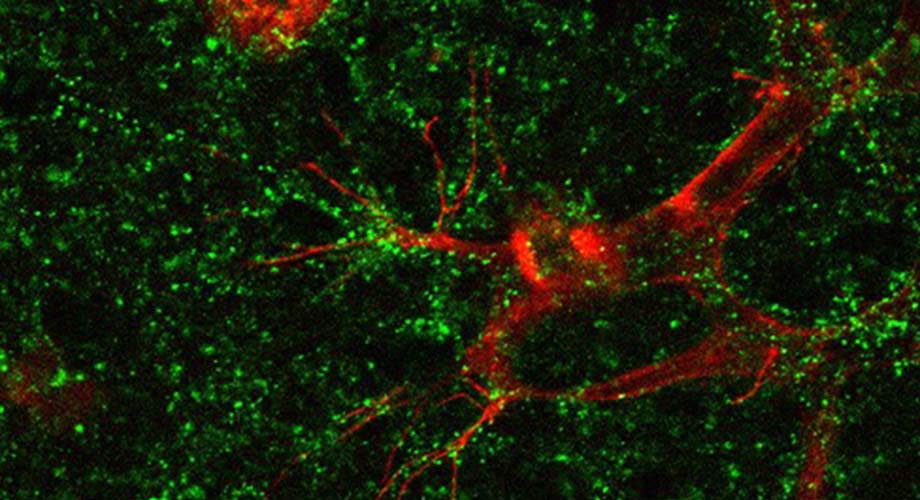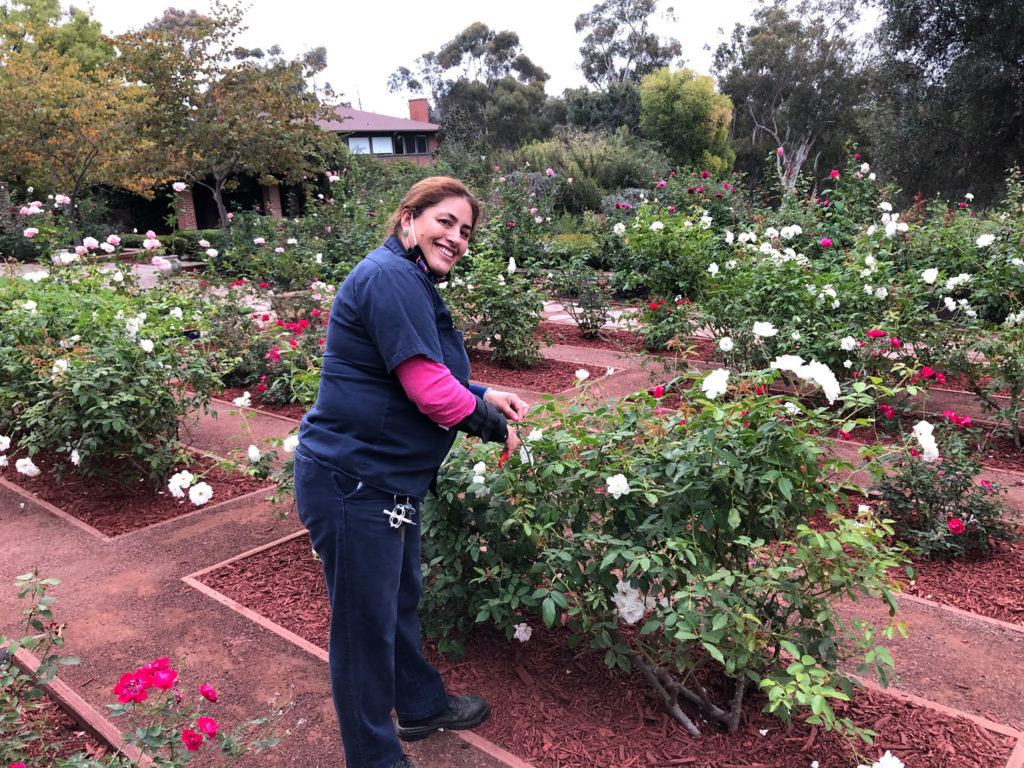Daily Business Report-Nov. 3, 2020
San Diego County’s registered voters total represents 88.07 percent of eligible citizens.
Good Morning everyone,
Today is Election Day
A record 22,047,448 Californians are registered to vote. That represents about 88 percent of eligible citizens, the highest percentage heading into a general election in the past 80 years, according to the secretary of state.
In San Diego County, 1,950,545 persons are regisered to vote, or 88.07 percent of eligible citizens.
Besides San Diego County races, you will help decide the fate of 12 statewide propositions, the makeup of the state Assembly and Senate, and California’s delegation to the U.S. House of Representatives. The presidential race is a foregone conclusion in California: former Vice President Joe Biden is on track to notch the largest victory margin for a Democratic presidential candidate in state history.
A staggering 50 percent of California registered voters had returned their ballots as of Sunday — obliterating the state’s past early-voting record.
_____________________________________________

Boingo to launch cellular services
for SDSU’s new multi-use stadium
San Diego State University selects Boingo to design, build and manage a 5G-ready DAS network for the university’s new multi-use Aztec Stadium.
Aztec Stadium is part of a $3.5 billion SDSU campus expansion project in Mission Valley. SDSU selected Boingo as the stadium’s DAS partner after a competitive review process, where the company stood out for its 5G expertise and neutral host approach that helps ensure all Tier One cellular carriers can access the network.
Boingo will deploy service throughout Aztec Stadium, including bowl seating, the playing field, concourses, entry gates, press box, locker rooms, media center, administrative offices and the surrounding parking lots.
“The new Aztec Stadium will be a world-class sports and entertainment venue with world-class connectivity built for the 5G era,” said Boingo CEO Mike Finley. “We’re proud to enable the stadium’s tech-forward initiatives to keep guests connected—whether live-streaming kickoff, engaging on the Aztecs mobile app or using a mobile ticket.”
_____________________________________________

First-year USD student claims top prize
in Fowler Business Concept Challenge
When anxiety, happiness, and a sense of accomplishment happen simultaneously, what does that feel like? Well, when the winner of the second Fowler Business Concept Challenge (FBCC) was revealed Friday, all of the above emotions expressed were in perfect Harmony.
“I am so shocked, eternally grateful, I was feeling so many emotions when I won,” said 18-year-old first-year University of San Diego student Harmony Prado. “I saw my competitors and … oh my gosh, I’m the youngest competitor. But I knew I had a strong community supporting me, an amazing mentor and everyone believed in me, so I believed in myself. But I still can’t believe I won first place!”
Believe it.
Prado, whose idea, Harmony’s Room, is a digital safe space/mental health and well-being platform offering emotional support services for youth, earned the top scholarship prize of $15,000 from a pool of $45,000 provided by Ron and Alexis Fowler.
Carl Dumesle, an MBA student and the FBCC’s 2019 top winner, had a different idea and finished second, earning $7,500 for Anapryze. Brianna Jackson was third overall with $5,000 for Proxy Hairware, and Shiley-Marcos School of Engineering student Carlos Hernandez gained $3,500 for his idea, Pedals. Two $1,000 audience choice awards went to Dumesle and Bella Manning for Wilo & Mae. Twelve semifinalists each received $1,000.
_____________________________________________

Hillebrand expands its North American
warehouse network to San Diego
Hillebrand is a service provider in thetransport and logistics of beer, wine, spirits and products that require special care, has expanded its North American supply chain network to include a new warehouse at The Campus at San Diego Business Park. This is Hillebrand’s first facility in San Diego and another step in the expansion of its U.S. and worldwide logistics capabilities.
“We continue to invest in our network and our people in North America to support the beverage industry. This new warehouse location will be significant in serving our valued clients with production in Mexico and Latin America,” said Scott Moorad, chief operating officer of Hillebrand North America.
What attracted Hillebrand to the property was its location. This key logistics hub provides an efficient point of entry for Mexican import products. This is Hillebrand’s second strategic warehouse location in close proximity to the Mexico border. Hillebrand also has a facility in Laredo, Texas that is a key site for the management of beer, spirits and specialty beverages.
“This campus will transform beverage logistics through San Diego and Hillebrand’s role in supporting trade across the border,” said Joe Manchaca, director of warehousing for Hillebrand.
_____________________________________________
Cubic and Sqills continue modernization
effors for Irish Rail
Cubic Corporation announced its Cubic Transportation Systems (CTS) business division was awarded a contract worth more than $11 million to provide Iarnród Éireann Irish Rail with ongoing enhancements to its ticketing system. As part of the contract, Cubic’s partner and industry-leading ticketing SaaS provider Sqills, has started the migration of its booking, reservation and revenue management software, S3 Passenger from on premise hosting to Software as a Service (SaaS) mode. Sqills was contracted by Cubic in 2014 to provide its S3 Passenger system as a component of the Customer First solution provided by Cubic to Iarnród Éireann Irish Rail.
_____________________________________________

Federal $11.4 million grant to advance drug to treat nicotine addiction
Scientists at Sanford Burnham Prebys Medical Discovery Institute, Camino Pharma, LLC and University of California San Diego School of Medicine have been awarded an $11.4 million grant from the National Institute on Drug Abuse (NIDA) at the National Institutes of Health (NIH) to advance a novel drug candidate for nicotine addiction into first-in-human Phase 1 studies. The drug targets a neuronal signaling pathway underlying addictive behaviors, and would be a first-in-class medication to help people quit smoking.
More than one billion people worldwide smoke tobacco, and the advent of electronic cigarettes (e-cigarettes) has caused a sharp increase in young adults who use nicotine—the addictive component of tobacco. Cigarette smoking accounts for approximately 30 percent of all cancers, including 80 percent of lung cancer cases, according to the American Cancer Society. Lung cancer remains the number-one cause of cancer deaths in the U.S., and more than half of people die within a year of being diagnosed.
_____________________________________________

New strategy for treating common retinal diseases shows promise
Scientists at Scripps Research have uncovered a potential new strategy for treating eye diseases that affect millions of people around the world, often resulting in blindness.
Many serious eye diseases—including age-related macular degeneration, diabetic retinopathy and related disorders of the retina—feature abnormal overgrowth of new retinal blood vessel branches, which can lead to progressive loss of vision. It’s a phenomenon called “neovascularization.”
For the past decade and a half, eye doctors have been treating these conditions with drugs that block a protein, VEGF, that’s responsible for spurring new vessel growth. Such drugs have improved the treatment of these conditions, but don’t always work well and have potential safety issues. The Scripps Research scientists, in a study published in the Proceedings of the National Academy of Sciences, showed that a new approach that doesn’t target VEGF directly is highly effective in mice and has broader benefits than a standard VEGF-blocking treatment.
“We were thrilled to see how well this worked in the animal model,” says Rebecca Berlow, PhD, co-senior author of the study. “There really is a need for another way to treat patients who do not respond well to anti-VEGF treatments.”
_____________________________________________
Scientist receives $2.3 million to study
fundamentals of immune cell activation
Scientists at La Jolla Institute for Immunology (LJI) have received a new grant of more than $2.3 million from the National Institutes of Health’s National Heart, Lung, and Blood Institute to study how a family of molecules called integrins helps the body fight disease. The research could open the door to new cancer therapies or treatments for autoimmune diseases.
“Once you understand integrin activation better, you will have new targets for drugs,” says Professor Klaus Ley, M.D., who will spearhead the five-year project at LJI.
The work is part of a larger collaboration led by Professor Mark Ginsberg, M.D., of the University of California San Diego School of Medicine. Overall, the National Heart, Lung, and Blood Institute has granted more than $11.8 million to the research teams working under Ginsberg.
_____________________________________________
Head of Employment Development
Department to retire
Sharon Hilliard, the director of California’s unemployment department, will retire Dec. 31, the Employment Development Department announced.Hilliard’s retirement comes less than a year after Newsom appointed her to lead the department, which has come under fire amid the pandemic for leaving millions of workers unable to access their benefits.
Hilliard has also faced the wrath of lawmakers, who in August demanded Newsom completely overhaul the department — which they characterized as “an organization directed by a small inner circle of long-serving bureaucrats … unable to drive reform.”
Hilliard: “It has been my privilege to be part of the EDD team since the day I walked into the EDD building over 37 years ago. … I retire knowing that EDD is on a great path to success.”
Hilliard’s successor will face myriad challenges, including overseeing a new ID-verification tool, implementing dozens of recommendations from Newsom’s strike team, handling fraud investigations, and meeting a Jan. 27, 2021 deadline of clearing nearly 1 million backlogged claims.
Operation Shelter to Home honored with
San Diego County Taxpayers Assn. award
Operation Shelter to Home, an innovative collaboration to protect the health of San Diegans experiencing homelessness during the COVID-19 pandemic and help them obtain housing as quickly as possible, has been honored with the “Grand Golden Watchdog” award from the San Diego County Taxpayers Association’s (SDCTA).
“Operation Shelter to Home has been a truly collaborative effort with resources coming together from all across our region during this pandemic to protect our vulnerable homeless population,” said Mayor Kevin L. Faulconer. “This recognition by the Taxpayers Association is a testament to the work that we’ve done collectively as a region to keep folks healthy, house hundreds of people at record pace, and invest in solutions that change lives for the better.”
“Operation Shelter to Home has been vital to our efforts to protect unsheltered San Diegans from contracting COVID-19,” said Supervisor Nathan Fletcher, co-chair of the County’s COVID-19 Subcommittee. “It also helped to coordinate our collective actions around getting homeless individuals into permanent and supportive housing situations. This initiative is a shining example of city, county and nonprofit collaboration at its best.”
Operation Shelter to Home serves more than 1,000 individuals per day and has helped more than 750 people obtain permanent or longer-term housing since it launched on April 1, 2020.
“This initiative demonstrates the positive impact coordination, collaboration and unified commitment can have in addressing homelessness in the City of San Diego,” San Diego Housing Commission (SDHC) President & CEO Richard C. Gentry said. “I thank and congratulate all of the organizations working together to make this program a success.”
The SDCTA Golden Watchdog Awards recognize the best in local government spending and decision-making in San Diego County.
Operation Shelter to Home is a collaboration among the City of San Diego, County of San Diego, SDHC, Regional Task Force on the Homeless, the San Diego Convention Center, Father Joe’s Villages, Alpha Project, Veterans Village of San Diego and additional service providers.
San Diego rents increase sharply over the past month
San Diego rents have increased 0.6 percent over the past month, but are down slightly by 0.4 percent in comparison to the same time last year, according to an Apartment List report. Currently, median rents in San Diego stand at $1,573 for a one-bedroom apartment and $2,086 for a two-bedroom. This is the fourth straight month that the city has seen rent increases after a decline in June. San Diego’s year-over-year rent growth leads the state average of -5.0 percent, as well as the national average of -1.4 percent.
Throughout the past year, rent decreases have been occurring not just in the city of San Diego, but across many other cities in the state. Rents have dropped in 1 of the largest 10 cities in California for which we have data. The state as a whole logged rent growth of -5.0 percent over the past year.
San Francisco is the most expensive of all California’s major cities, with a median two-bedroom rent of $2,467; of the 10 largest California cities that Apartment Lis has data for, six have seen rents fall year-over-year, with San Francisco experiencing the fastest decline (-23.4 percent).
Illumina pledges $20 million
in sequencing tech for Africa
Illumina is joining a cross-sector partnership to support the Africa CDC Institute of Pathogen Genomics in launching the Africa Pathogen Genomics Initiative (Africa PGI). The comprehensive initiative will expand access to Next-generation sequencing
(NGS)tools and expertise with the goal of strengthening pathogen capacity across the continent, including capacity building in 20-plus countries.
Illumina will donate NGS platforms, reagents, and training support worth approximately $20 million over four years. Partners in the U.S. $100 million initiative include the U.S.Centers for Disease Control and Prevention, the Bill & Melinda Gates Foundation, Oxford Nanopore Technologies, Microsoft, and others.
This new initiative will facilitate and support essential research and public health responses to COVID-19 and other disease threats, including endemic diseases such as HIV/AIDS, tuberculosis, malaria, cholera, and other infectious diseases. Having genomic information from these pathogens across the continent will be essential in the ongoing effort to combat antimicrobial resistance, perhaps the greatest public health threat globally. The initiative aims to not only accelerate implementation of NGS for pathogen surveillance, but also to drive sustainability to ensure capabilities are maintained. The network of laboratories—some of which are receiving NGS capabilities for the first time—will be complementary to the Institute of Pathogen Genomics, launched by Africa CDC in 2019, to strengthen pathogen genomics and bioinformatics capacity across Africa.

Marston House gardener Claudia Glenn honored
Congratulations to Claudia Glenn, the City of San Diego’s landscape gardener who lovingly tends the Marston House gardens and grounds, which she calls “my second home.”
She’s being honored as the City of San Diego Parks and Recreation Department’s 2020 Employee of the Year. Chosen from more than 1,000 department employees, and among finalists who were third-quarter award winners, this is quite an accomplishment.
Employed by the Parks Department for eight years, Claudia previously worked at La Jolla Cove and in Alcazar Gardens.
As an estate garden, the landscaping at the Marston House is dramatically different from her previous work, and Claudia has found much inspiration there, especially in the formal garden area.
Since she had not previously cared for roses, a favorite of the Marston family who had planted over 100 of various types in 1906 alone, she sought out a specialist at Balboa Park’s rose garden to learn more. Claudia then improved and expanded the number of rose bushes at the Marston House and has trained neighbors who have volunteered to help with them too.
Claudia also toured the Marston House Museum in pre-pandemic days, and gained an appreciation for George Marston’s legacy, roses and all. “What he did for the people was very significant,” she said.
“Claudia is such a devoted, hard worker and the results of her efforts are so evident at the Marston House grounds that it’s no wonder she received these accolades,” said Alana Coons, Save Our Heritage Organisation’s director of education and communications. “SOHO very much appreciates all that she does. We join the City in applauding Claudia and in recognizing her work with this well-deserved award.”


